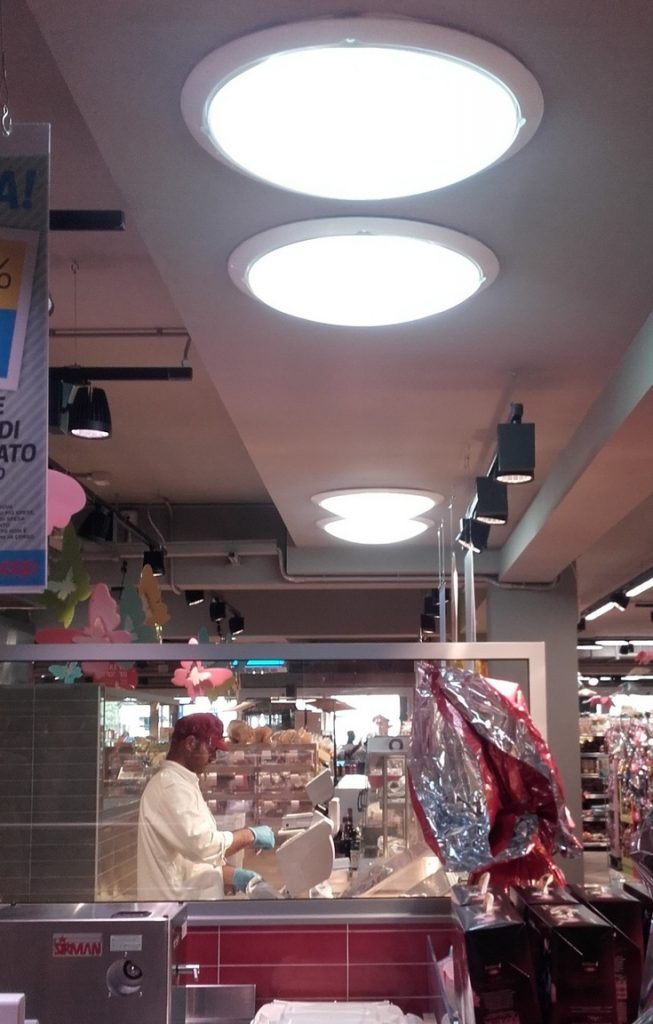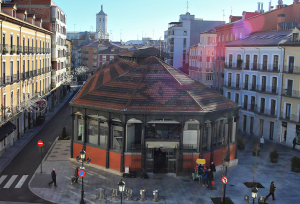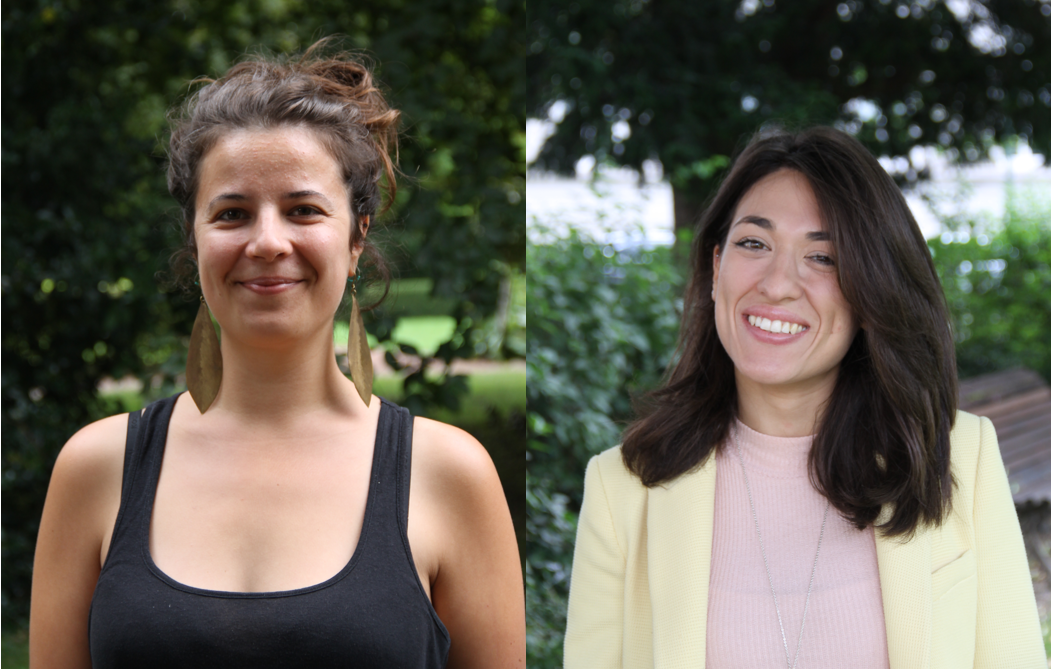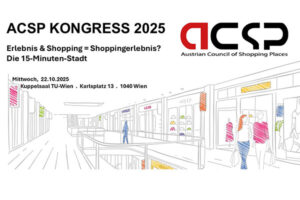In the last four years, the EU-funded project CommONEnergy has supported this transition by developing solution sets for deep, systemic retrofitting, as well as support tools and methods for energy-efficiency evaluation, lean management, continuous commissioning, environmental and socio-cultural impact assessment, and health and comfort analyses.
By Roberta D’Angiolella and Marine Faber
Non-residential buildings make up a significant portion of the EU’s building stock (30%) and GDP (11%). This means that investing in their retrofitting would result in huge energy savings and CO2 reductions and thus is a great support in attaining the EU’s long-term energy and environmental climate objectives.
The renovation rate of shopping centers is high (4.4%) compared to the rate of the entire EU building stock (1%), mainly because shopping centers are subject to constant changes and evolutions.
They are also regularly refurbished and redesigned for marketing reasons: They must remain highly attractive for clients, who are more and more attracted by “green” solutions and sustainable architecture. Because of their peculiarities, however, such as different owners in short timeframes; continuous re-styling; a need for standard, pre-manufactured parts; large spaces and volumes; and complex layouts and management, the shopping center energy transition is not always easy.
EU projects like CommONEnergy facilitate the process. In particular, CommONEnergy aimed at re-conceptualizing shopping centers through deep retrofitting, developing a systemic approach made of innovative technologies and solution sets, as well as methods and tools to support their implementation and assess their environmental and social impact.
Main inefficiencies identified

The work started in 2013 with an EU shopping center stock analysis to identify reference buildings representative of the whole stock. This was assessed according to architectural and construction features; energy system layouts; urban, social and economic contexts; and possible interactions with surrounding energy grids. The collected data and key architectural and energy figures were included in an interactive online data mapper.
CommONEnergy partners then identified the main inefficiencies of shopping centers, especially for energy, comfort, operational (maintenance), and logistics, and defined shopping centers’ typical functional patterns, the influence of stakeholders (owners/managers, tenants, customers) on the energy figures, and their interaction with the social context. A parametric analysis was performed with these elements aimed at identifying drivers of retrofitting and the most promising solution in terms of costs and benefits.
CommONEnergy developed different innovative and technological solutions, together with tools and methods to analyze shopping centers’ performance in the different phases of the retrofitting process.
For example, an integrative modelling environment (IME) was defined to manage the complexity of the shopping center retrofitting design phase. It includes numerical models for specific technologies to be used in shopping centers, specific control rules for each technology, and enhanced management strategies for all the Heating, Ventilation, Air-Conditioning, Lighting, Refrigeration, and Storage systems (HVAC+L+R+S).
The IME makes defining a numerical model of the shopping center simpler because it supports the design-team decision process (integrative design process), facilitating the choice of the best renovation strategies through a standardized cost-benefit analysis.
An iBEMS (intelligent Building Energy Management System) was developed to manage the complexity of the operational phase. It features a tailored general BMS architecture for shopping centers, including electrical and functional concepts to connect possible electrical vehicles and energy storage systems. The iBEMS allows the inter-communication of different systems using open protocols for building management.
Helpful tools

Several tools were also developed based on the shopping centers’ deep retrofitting drivers and detailed simulations of reference buildings.
The Integrated Design Process (IDP) library is a user-friendly online repository tool conceived to provide designers, owners, and managers with relevant information to start a shopping center retrofitting process. It collects information about malls’ archetypes and specific technology features, as well as climate, social, and urban contexts.
The Economic Assessment Tool, meanwhile, is an instrument for estimating the energy-saving potential and economic benefits of retrofitting shopping malls. The tool targets shopping center managers and owners and allows them to enter relevant information about their centers. It provides quick information on energy consumption and options to reduce energy demand, CO2 emissions, and environmental impact, and provides an economic assessment of the investments.
The steps in CommONEnergy’s systemic retrofitting approach are: develop a retrofitting concept, develop a technology solution set, design, procurement, implementation, and validation/assessment. The innovative technologies and solutions it generated were implemented in three demo cases in Italy, Spain, and Norway, where several technology solutions were agreed, designed, installed, and commissioned with the local design teams, building owners (the “clients”), and the general contractors.
2017 is the closing year of CommONEnergy, which can now boast of solutions and methodologies available on the market, in addition to many lessons learned. Indeed, the project has shown that there is a great deal of replication potential and exploitable co-benefits in shopping centers’ energy retrofitting and that this is also valid for similar buildings, like airports and train stations.

Keeping in mind that clients expect more and more from their experience in shopping centers, it is important that such buildings are constantly upgraded, not only aesthetically, but also in terms of sustainability, becoming great business opportunities for shopping center stakeholders. Such buildings are extremely complex and peculiar, however, and therefore require a higher and more specific regard in EU legislation (e.g. directives EPBD, EED) and relevant national legislative frameworks.
Projects like CommONEnergy play an important role in raising awareness around energy and environmental issues and in facilitating the transition of shopping centers from ‘’icons of consumerist society’’ to lighthouses of energy efficient systems and sustainable architecture. In the future, by drastically reducing energy needs, shopping centers have the potential to become energy hubs at the heart of local smart grids, integrated with demand/response mechanisms and renewable energy sources.
The project CommONEnergy, led by 23 partners from across Europe from research centers, the retail sector, and the industry, implemented and/or tested over 25 solutions and tools it developed in three demo cases and eight reference buildings, leading to up to a 75% reduction in energy demand and costs, with the initial investment paid back within at most seven years. Find out more on www.commonenergyproject.eu.
Focus on innovative solutions
Solutions to improve the harvesting of natural sources for shopping centers’ envelope were studied, while introducing new functions for reducing the energy demand of the whole building. Some are listed below:
- Greenery integration in the building envelope: Direct use of vegetation to improve the building’s thermal performance. The vegetation placed on the façade can reduce the absorption of solar irradiation on the wall surface. It may also influence the convection of heat transferred to/from the wall.
- Multifunctional smart coating materials: Several commercial nanoparticles were examined to check their reflectance properties, thermal behavior, and anti-molding/antibacterial activity: the four most effective formulations were chosen for integration into the base paint to enrich it with added properties. The final user can pick from a list of properties those suitable for the area’s climate conditions and just add the formulation to the desired commercial coating product.
- To optimize natural lighting, innovative light domes were deployed that pass sunlight through solar tubes.
CommONEnergy policy recommendations
CommONEnergy developed a policy paper building on the demo cases and giving concrete examples of the benefits coming from the renovation of shopping centers.
Its recommendations can serve as an important basis for revising the Energy Performance of Buildings Directive (EPBD) (part of the Clean Energy for All Europeans policy package the European Commission released at the end of 2016) and for shaping EU legislation for European buildings.
Following the project’s policy recommendations would mean seizing the opportunity for a more ambitious revision of the EPBD and better recognizing the significant role shopping centers can play in achieving EU energy efficiency targets.
The recommendations are based on expertise and research from over 23 organizations and three demonstration cases and grouped under four main themes: engaging stakeholders, communicating the benefits of renovation, promoting energy efficient technology packages, and supporting the energy transition. They are available at commonenergyproject.eu.
About the authors
Marine Faber is senior communications manager at the Buildings Performance Institute Europe (BPIE). Roberta D’Angiolella is communications assistant at BPIE.
BPIE is a not-for-profit think tank with a focus on independent analysis and knowledge dissemination, supporting evidence-based policy making in the field of energy performance in buildings.
The Institute is a center of expertise on all aspects of energy efficiency, renewable energy, and energy performance of European buildings and focuses on policy analysis and advice. It shares its knowledge through studies, policy briefs, presentations, and events.







